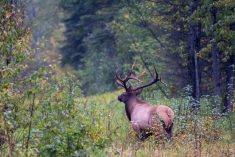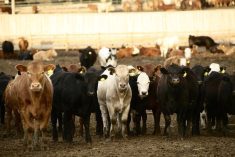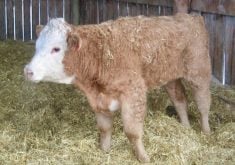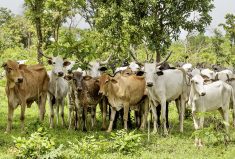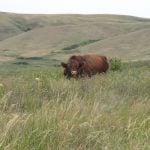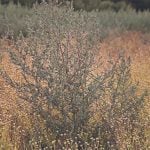Jim visited the office one morning and asked if we could talk. He looked worried, a bit like a child that had gotten into the Halloween candy early. Two years ago, Jim had started team roping with a local club. Good crops and strong cattle prices allowed Jim to build his own small arena.
His recent purchase of six Corriente steers turned out to be the subject of concern. “I think I made a mistake,” he started. “You’ve talked to me at length about basic biosecurity. Your advice on my herd of 60 Hereford-cross cows helped a lot. Well, it all went out the window. A guy I met roping offered to sell six Corriente steers cheap because they were in poor shape. Overworked, he thought. I bought them, brought them home and put the six with my cows hoping to put a bit of weight on ’em. One steer died yesterday and I now have two cows with bad diarrhea. What might be wrong?”
“My first guess, Jim, is probably something you don’t want to hear. There is a very good chance you got a lot more than you bargained for: Johne’s disease or BVD. It may be both and you don’t want either. There’s a good chance the five remaining steers are about to become coyote bait in the back 40.”
Read Also

Canadian Beef Check-Off Agency reports on investments and activities
The check-off agency’s work behind the scenes is what ensures cattle check-off dollars are invested wisely, accounted for transparently and deliver measurable value back to producers and importers.
A post-mortem on the dead steer suggested Johne’s disease. Tests on ear notches on the dead steer and the remaining five live steers identified three as persistently infected with bovine viral diarrhea (BVD). The steers had to go.
The plan going forward included closely observing the cow herd to eliminate anything with chronic diarrhea, BVD vaccination, and sampling ear notches on next year’s calf crop to monitor BVD shedding in-herd.
Jim and I reviewed basic biosecurity practices again. I reminded Jim about the cost of BVD — it’s currently one of the most costly diseases of cattle. Abortions, infertility and/or embryonic deaths associated with BVD lead to significantly reduced reproductive performance and increased premature culling. Clinical signs are especially marked if one or more BVD carriers are in the herd. BVD infection is diagnosed based on clinical signs plus confirmation through necropsy findings and laboratory tests of blood samples. Abortions need to be submitted with placenta and blood samples from the dam. Persistently infected carriers are easier to detect with skin-notch testing.
BVD prevention is based on maximizing immunity and minimizing exposure of the herd to the virus. Several choices exist regarding vaccination protocols.
I cautioned Jim again on biosecurity:
- Isolate and monitor new arrivals.
- During isolation, administer a booster BVD vaccine, especially if the vaccine history is unclear.
- Exposure to BVD from any source can result in a cow giving birth to a BVD carrier. In the absence of complete histories, it’s recommended all purchased cattle be tested before entering the herd. Test all newborn calves as well.
- Stay away from auction mart replacements. Purchased animals should be accompanied by health certification outlining vaccination history and freedom from infectious diseases including Johne’s and BVD. Suggestion: buy clean, stay clean. Raise your own.
Currently, no Johne’s disease vaccines are licensed for use in Canada.
An effective biosecurity plan is essential to prevent the introduction of infectious diseases such as Johne’s into a herd. Continuous evaluation of biosecurity procedures is important. For people like Jim, posted protocols regarding people and animals coming onto the farm require strict attention.
The lack of reliable tests to detect Johne’s-infected animals not showing clinical disease is an obstacle. (See Research on the Record in this issue for the latest on Johne’s surveillance).
The five remaining steers disappeared. Although disheartened, Jim left the office committed to reinstall sound biosecurity practices. It took several years and considerable expense for Jim to reach an even keel again. Lessons learned with animal disease take time to correct.
Dr. Ron Clarke is a veterinarian who consults on animal health and disease issues and writes for agricultural and veterinary audiences.




